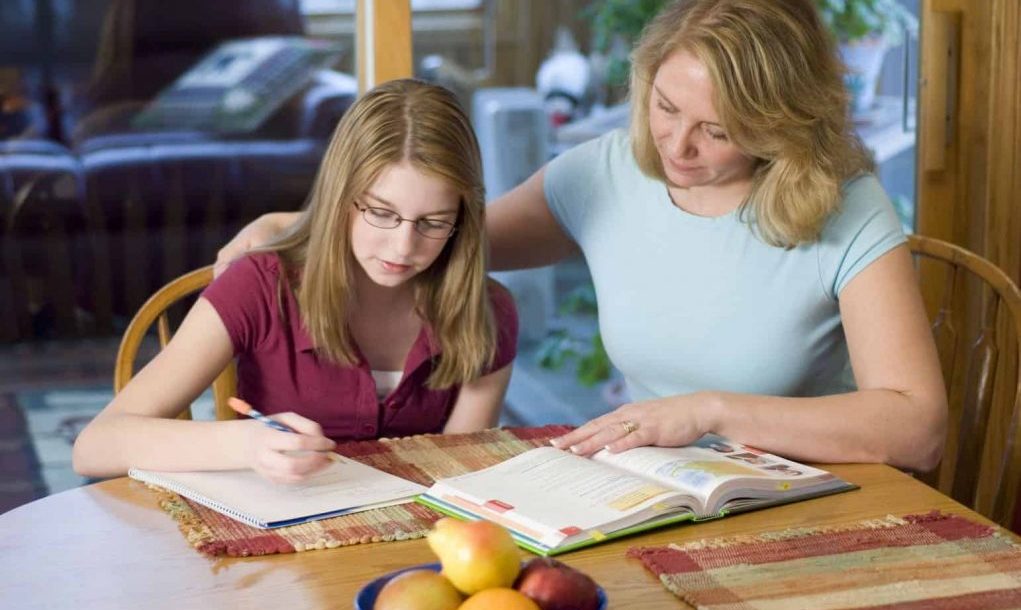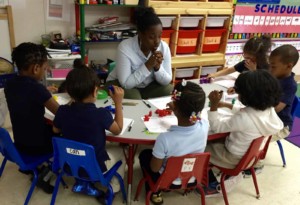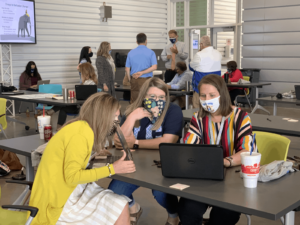Reimagining Family Engagement in the Time of Covid

Educators have long recognized that creating connections between the school and the home has far-reaching positive benefits for individual students and the broader community. Effective family engagement both enables school readiness and creates opportunities for families to reinforce and extend learning at home. It also works to establish a mutually supportive network of educators, families, and students, creating a climate that promotes learning and success.
Common channels of engagement include family night events, PTA meetings, parent-teacher conferences, and community-building social events. The pandemic and the need for physical distancing has disrupted many of these traditional strategies to engage families. Concomitantly, educators are relying on family contributions of time and support more than ever with so many students learning from home for at least some portion of the school week. And all involved—educators, parents, and students—have faced tremendous disruption to their own personal circumstances, limiting the overall emotional, financial, and logistical capacity for added responsibilities.
In the face of these challenges, but with a recognition of the importance of engaging and supporting families during this time, many educators have found ways to connect and partner with families. They have approached these obstacles with creativity, resilience, and resourcefulness to find meaningful ways to move learning forward.
Emerging Best Practices
More Inclusive Outreach: The forced shift to connecting virtually rather than in-person has resulted in many schools holding curricular presentations, meetings, and parent conferences via videoconference or recorded video. Though done out of necessity, this transition has actually increased access by removing barriers of time and place. Now, families can access these information-rich meetings from anywhere and at any time (if meetings are recorded). For families that are rarely able to attend scheduled events at school due to work conflicts, lack of childcare, and other personal circumstances, this has been a welcome change.
Building Families’ Teaching Toolkits: As the locus of learning has shifted to the home for all or part of students’ days, educators have found that it is important not to assume that parents have the professional expertise or practical experience of teachers. Practices or strategies that are commonplace for teachers are often foreign to those outside of the education sphere. Therefore, in order to properly support students at home, teachers have found it works best to explain the why and the how of activities and lessons to parents. When families understand the goal and have some strategies in hand, they can better help their children overcome obstacles and organically extend the learning through conversation and home activities. Broward County Public Schools in South Florida has offered a series of parent webinars, called “Parent University,” geared toward providing families with access to experts and resources for supporting student learning.
Access to Academic Content and Resources: With the pivot to virtual learning, many students have been given devices and tools to take home with them geared toward developmentally appropriate teaching and learning. Educators have found that coaching families on ways to use these resources leads to more productive and targeted practice. Educators have utilized this expanded access to devices to share educational apps that allow for opportunities to practice and reinforce specific skills and provide nearly unlimited digital libraries filled with materials matched to a student’s appropriate reading level. And schools and community organizations have partnered to get learning resources, normally available to students at school, into homes. In Los Angeles, early childhood community-based organizations collaborated with Scholastic to distribute books to young children’s families to promote literacy development during stay-at-home orders.
Grace, Compassion, and Support: So many families have been negatively impacted by the COVID pandemic. Educators have found that, in order to effectively connect with families, they must remember to have grace for students and families who are trying their best but are likely overwhelmed. Leading with compassion, even in moments of frustration, will benefit the long-term relationships with families. Further, as a schoolwide or districtwide initiative, some administrators and schools have found ways to channel shared resources to help families who could use a little extra support at this time with essential needs. These types of outreach support overall student success and go a long way in communicating that students and families are valued and an essential part of a connected school community.
Beyond the Pandemic
All of us cannot wait for school to resume in a more traditional and typical sense: Where teachers and students get to learn side-by-side in a classroom. Where families can gather at a back-to-school night or a fall school carnival. Where parents no longer have to be IT specialists or content experts to support their student’s learning. But, even when we do finally get to safely transition to this more familiar model, it’s important to keep in mind that there are elements of the family engagement practices that emerged during the pandemic that can continue to productively serve students, families, and teachers.
- Instead of limiting attendance and participation at school-wide meetings, schools can consider offering a link for virtual attendance as well. These opportunities allow for broader engagement and participation.
- Teachers can offer parents the option of a videoconference for parent-teacher conferences making it much easier for working parents, multiple caregivers, and parents with other young children at home to easily attend and participate in an engaging conversation with the teacher.
- Forging and strengthening substantive two-way partnerships between the school and home has tremendous benefits for all stakeholders. Even when students return to more traditional in-person schooling, educators should continue to see parents as partners in this learning and provide guidance, strategies, and material for families to extend, reinforce, and promote learning at home.
- The jobs of educators and parents are often thankless, endless, and filled with challenge. Having compassion and grace overlay relationships between teachers and families fosters a network of respect and mutual support, leading to the shared goal of student success.
The circumstances of the pandemic and its impacts have been incredibly difficult and filled with constant uncertainty, especially for educators and families with school-age children. These difficulties have inspired a resourcefulness, creativity, and resilience never before seen in education. Teachers have found ways to engage students and support families from afar and in deep and meaningful ways.
While born out of challenge and necessity, these family engagement strategies will continue to serve teachers and families long after the pandemic has waned. These new strategies and approaches will help to fortify channels of communication, build relationships within school communities, and, ultimately, build a stronger foundation for student learning for years to come.
For more, see:
- Engaging Families During Distance Learning
- 5 Recommendations to Improve Remote Learning for Families
- The Power of Engaging Families
Stay in-the-know with innovations in learning by signing up for the weekly Smart Update.








0 Comments
Leave a Comment
Your email address will not be published. All fields are required.